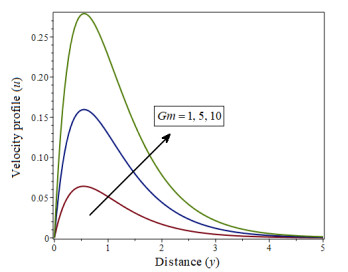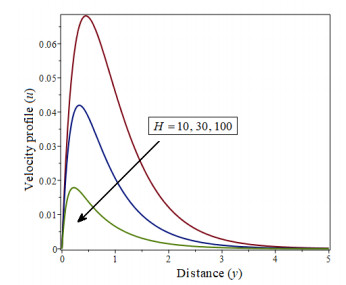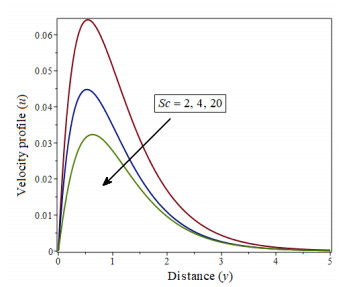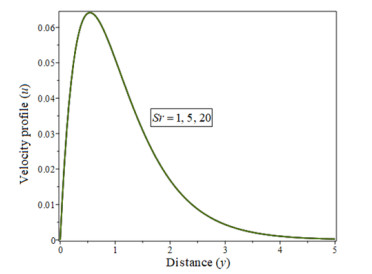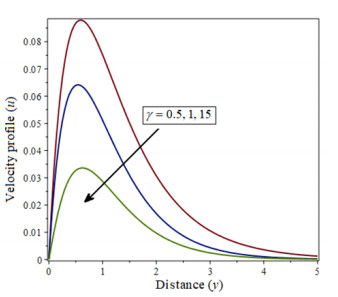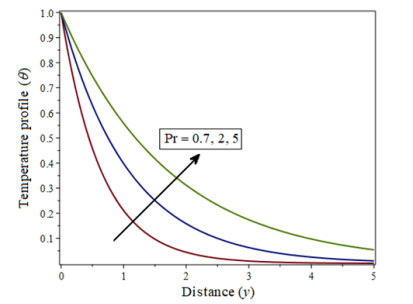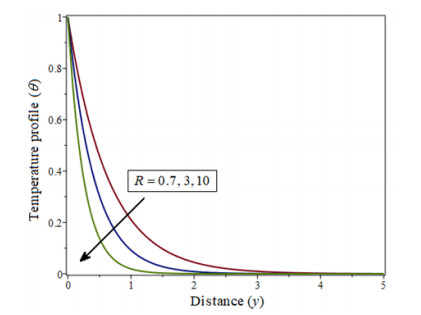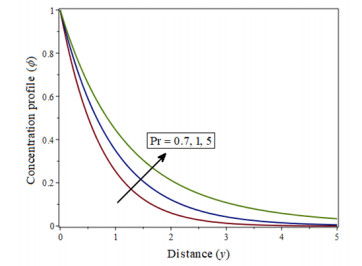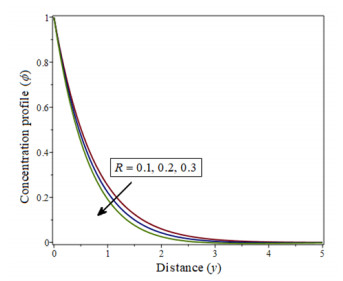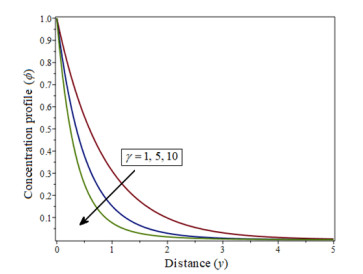|
[1]
|
Z. Ali, T. Mahmood, M. S. Yang, Aczel-alsina power aggregation operators for complex picture fuzzy (cpf) sets with application in cpf multi-attribute decision making, Symmetry, 15 (2023), 651. https://doi.org/10.3390/sym15030651 doi: 10.3390/sym15030651

|
|
[2]
|
V. Arya, S. Kumar, A novel todim-vikor approach based on entropy and jensen-tsalli divergence measure for picture fuzzy sets in a decision-making problem, Int. J. Intell. Syst., 35 (2020), 2140–2180. https://doi.org/10.1002/int.22289 doi: 10.1002/int.22289

|
|
[3]
|
K. T. Atanassov, Operators over interval valued intuitionistic fuzzy sets, Fuzzy Set. Syst., 64 (1994), 159–174. https://doi.org/10.1016/0165-0114(94)90331-X doi: 10.1016/0165-0114(94)90331-X

|
|
[4]
|
K. T. Atanassov, S. Stoeva, Intuitionistic fuzzy sets, Fuzzy Set. Syst., 20 (1986), 87–96. https://doi.org/10.1007/978-3-7908-1870-3_1 doi: 10.1007/978-3-7908-1870-3_1

|
|
[5]
|
N. M. F. H. N. Badrul, K. M. N. K. Khalif, N. I. Jaini, Synergic ranking of fuzzy z-numbers based on vectorial distance and spread for application in decision-making, AIMS Math., 8 (2023), 11057–11083. https://doi.org/10.3934/math.2023560 doi: 10.3934/math.2023560

|
|
[6]
|
G. Cao, L. Shen, A novel parameter similarity measure between interval-valued picture fuzzy sets with its app-lication in pattern recognition, J. Intell. Fuzzy Syst., 44 (2023), 1–27. https://doi.org/10.3233/JIFS-224314 doi: 10.3233/JIFS-224314

|
|
[7]
|
T. Chen, Evolved distance measures for circular intuitionistic fuzzy sets and their exploitation in the technique for order preference by similarity to ideal solutions, Artif. Intell. Rev., 56 (2023), 7347–7401. https://doi.org/10.1007/s10462-022-10318-x doi: 10.1007/s10462-022-10318-x

|
|
[8]
|
Z. Chen, P. Liu, Intuitionistic fuzzy value similarity measures for intuitionistic fuzzy sets, Comput. Appl. Math., 41 (2022), 45. https://doi.org/10.1007/s40314-021-01737-7 doi: 10.1007/s40314-021-01737-7

|
|
[9]
|
B. Cuong, Picture fuzzy sets-first results, part 1, seminar neuro-fuzzy systems with applications, Institute of Mathematics, Hanoi, 2013.
|
|
[10]
|
B. C. Cuong, V. Kreinovich, Picture fuzzy sets, J. Comput. Sci. Technol., 30 (2014), 409–420.
|
|
[11]
|
P. Dutta, Medical diagnosis via distance measures on picture fuzzy sets, Adv. Model. Anal. A, 54 (2017), 657–672.
|
|
[12]
|
P. Dutta, Medical diagnosis based on distance measures between picture fuzzy sets, Int. J. Fuzzy Syst., 7 (2018), 15–36. https://doi.org/10.4018/IJFSA.2018100102 doi: 10.4018/IJFSA.2018100102

|
|
[13]
|
Rasyidah, R. Efendi, N. M. Nawi, M. M. Deris, S. A. Burney, Cleansing of inconsistent sample in linear regression model based on rough sets theory, Soft Comput., 5 (2023), 200046. https://doi.org/10.1016/j.sasc.2022.200046 doi: 10.1016/j.sasc.2022.200046

|
|
[14]
|
A. H. Ganie, S. Singh, P. K. Bhatia, Some new correlation coefficients of picture fuzzy sets with applications, Neural. Comput. Appl., 32 (2020), 12609–12625. https://doi.org/10.1007/s00521-020-04715-y doi: 10.1007/s00521-020-04715-y

|
|
[15]
|
A. Ganie, A picture fuzzy distance measure and its application to pattern recognition problems, Iran. J. Fuzzy Syst., 20 (2023), 71–85.
|
|
[16]
|
E. Haktanır, C. Kahraman, Intelligent replacement analysis using picture fuzzy sets: Defender-challenger comparison application, Eng. Appl. Artif. Intell., 121 (2023), 106018. https://doi.org/10.1016/j.engappai.2023.106018 doi: 10.1016/j.engappai.2023.106018

|
|
[17]
|
M. K. Hasan, M. Y. Ali, A. Sultana, N. K. Mitra, Extension principles for picture fuzzy sets, J. Intell. Fuzzy Syst., 44 (2023), 6265–6275. https://doi.org/10.3233/JIFS-220616 doi: 10.3233/JIFS-220616

|
|
[18]
|
A. G. Hatzimichailidis, G. A. Papakostas, V. G. Kaburlasos, A novel distance measure of intuitionistic fuzzy sets and its application to pattern recognition problems, Int. J. Intell. Syst., 27 (2012), 396–409. https://doi.org/10.1002/int.21529 doi: 10.1002/int.21529

|
|
[19]
|
E. Hellinger, Neue begründung der theorie quadratischer formen von unendlichvielen veränderlichen., J. Reine Angew. Math., 1909 (1909), 210–271. https://doi.org/10.1515/crll.1909.136.210 doi: 10.1515/crll.1909.136.210

|
|
[20]
|
I. M. Hezam, P. Rani, A. R. Mishra, A. Alshamrani, An intuitionistic fuzzy entropy-based gained and lost dominance score decision-making method to select and assess sustainable supplier selection, AIMS Math., 8 (2023), 12009–12039. https://doi.org/10.3934/math.2023606 doi: 10.3934/math.2023606

|
|
[21]
|
H. Huang, Z. Liu, X. Han, X. Yang, L. Liu, A belief logarithmic similarity measure based on dempster-shafer theory and its application in multi-source data fusion, J. Intell. Fuzzy Syst., 45 (2023), 4935–4947. https://doi.org/10.3233/JIFS-230207 doi: 10.3233/JIFS-230207

|
|
[22]
|
C. M. Hwang, M. S. Yang, W. L. Hung, New similarity measures of intuitionistic fuzzy sets based on the jaccard index with its application to clustering, Int. J. Intell. Syst., 33 (2018), 1672–1688. https://doi.org/10.1002/int.21990 doi: 10.1002/int.21990

|
|
[23]
|
R. Jaikumar, S. Raman, M. Pal, Perfect score function in picture fuzzy set and its applications in decision-making problems, J. Intell. Fuzzy Syst., 44 (2023), 3887–3900. https://doi.org/10.3233/JIFS-223234 doi: 10.3233/JIFS-223234

|
|
[24]
|
A. M. Khalil, S. G. Li, H. Garg, H. Li, S. Ma, New operations on interval-valued picture fuzzy set, interval-valued picture fuzzy soft set and their applications, IEEE Access, 7 (2019), 51236–51253.
|
|
[25]
|
X. Li, Z. Liu, X. Han, N. Liu, W. Yuan, An intuitionistic fuzzy version of hellinger distance measure and its application to decision-making process, Symmetry, 15 (2023), 500. https://doi.org/10.3390/sym15020500 doi: 10.3390/sym15020500

|
|
[26]
|
D. Y. F. Lin, Influence of weight function for similarity measures, AIMS Math., 7 (2022), 6915–6935. https://doi.org/10.3934/math.2022384 doi: 10.3934/math.2022384

|
|
[27]
|
M. Lin, C. Huang, Z. Xu, Multimoora based mcdm model for site selection of car sharing station under picture fuzzy environment, Sustain. Cities Soc., 53 (2020), 101873. https://doi.org/10.1016/j.scs.2019.101873 doi: 10.1016/j.scs.2019.101873

|
|
[28]
|
M. Lin, X. Li, R. Chen, H. Fujita, J. Lin, Picture fuzzy interactional partitioned heronian mean aggregation operators: An application to madm process, Artif. Intell. Rev., 55 (2022), 1171–1208. https://doi.org/10.1007/s10462-021-09953-7 doi: 10.1007/s10462-021-09953-7

|
|
[29]
|
M. Lin, J. Wei, Z. Xu, R. Chen, Multiattribute group decision-making based on linguistic pythagorean fuzzy interaction partitioned bonferroni mean aggregation operators, Complexity, 2018 (2018), 1–25. https://doi.org/10.1155/2018/9531064 doi: 10.1155/2018/9531064

|
|
[30]
|
D. Liu, X. Chen, D. Peng, Interval-valued intuitionistic fuzzy ordered weighted cosine similarity measure and its application in investment decision-making, Complexity, 2017 (2017), 1891923. https://doi.org/10.1155/2017/1891923 doi: 10.1155/2017/1891923

|
|
[31]
|
M. Liu, S. Zeng, T. Balezentis, D. Streimikiene, Picture fuzzy weighted distance measures and their application to investment selection, Amfiteatru Econ., 21 (2019), 682–695. https://doi.org/10.24818/EA/2019/52/682 doi: 10.24818/EA/2019/52/682

|
|
[32]
|
P. Liu, M. Munir, T. Mahmood, K. Ullah, Some similarity measures for interval-valued picture fuzzy sets and their applications in decision making, Information, 10 (2019), 369. https://doi.org/10.3390/info10120369 doi: 10.3390/info10120369

|
|
[33]
|
Z. Liu, Credal-based fuzzy number data clustering, Granul. Comput., 8 (2023), 1907–1924. https://doi.org/10.1007/s41066-023-00410-0 doi: 10.1007/s41066-023-00410-0

|
|
[34]
|
Z. Liu, An effective conflict management method based on belief similarity measure and entropy for multi-sensor data fusion, Artif. Intell. Rev., 56 (2023), 15495–15522. https://doi.org/10.1007/s10462-023-10533-0 doi: 10.1007/s10462-023-10533-0

|
|
[35]
|
Z. Liu, Y. Cao, X. Yang, L. Liu, A new uncertainty measure via belief rényi entropy in dempster-shafer theory and its application to decision making, Commun. Stat.-Theor. M., 2023, 1–20. https://doi.org/10.1080/03610926.2023.2253342 doi: 10.1080/03610926.2023.2253342

|
|
[36]
|
Z. Liu, H. Huang, Comment on "new cosine similarity and distance measures for fermatean fuzzy sets and topsis approach", Knowl. Inf. Syst., 65 (2023), 5151–5157. https://doi.org/10.1007/s10115-023-01926-2 doi: 10.1007/s10115-023-01926-2

|
|
[37]
|
Z. Liu, H. Huang, S. Letchmunan, Adaptive weighted multi-view evidential clustering, In Int. Conf. Artif. Neural Netw., Springer, 2023,265–277. https://doi.org/10.1007/978-3-031-44216-2_22
|
|
[38]
|
M. Luo, W. Li, Some new similarity measures on picture fuzzy sets and their applications, Soft Comput., 27 (2023), 6049–6067. https://doi.org/10.1007/s00500-023-07902-w doi: 10.1007/s00500-023-07902-w

|
|
[39]
|
M. Luo, Y. Zhang, A new similarity measure between picture fuzzy sets and its application, Eng. Appl. Artif. Intell., 96 (2020), 103956. https://doi.org/10.1016/j.engappai.2020.103956 doi: 10.1016/j.engappai.2020.103956

|
|
[40]
|
Z. Ma, Z. Liu, C. Luo, L. Song, Evidential classification of incomplete instance based on k-nearest centroid neighbor, J. Intell. Fuzzy Syst., 41 (2021), 7101–7115. https://doi.org/10.3233/JIFS-210991 doi: 10.3233/JIFS-210991

|
|
[41]
|
T. Mahmood, H. M. Waqas, Z. Ali, K. Ullah, D. Pamucar, Frank aggregation operators and analytic hierarchy process based on interval-valued picture fuzzy sets and their applications, Int. J. Intell. Syst., 36 (2021), 7925–7962. https://doi.org/10.1002/int.22614 doi: 10.1002/int.22614

|
|
[42]
|
A. Ohlan, Novel entropy and distance measures for interval-valued intuitionistic fuzzy sets with application in multi-criteria group decision-making, Int. J. Gen. Syst., 51 (2022), 413–440. https://doi.org/10.1080/03081079.2022.2036138 doi: 10.1080/03081079.2022.2036138

|
|
[43]
|
P. Perveen, S. J. John, H. Kamacı, T. Baiju, A novel similarity measure of picture fuzzy sets and its applications, J. Intell. Fuzzy Syst., 44 (2023), 4653–4665.
|
|
[44]
|
C. Qin, M. Liu, Z. Zhang, H. Yu, Y. Jin, H. Sun, et al., An adaptive operating parameters decision-making method for shield machine considering geological environment, Tunn. Undergr. Space Technol., 141 (2023), 105372. https://doi.org/10.1016/j.tust.2023.105372 doi: 10.1016/j.tust.2023.105372

|
|
[45]
|
A. U. Rahman, M. Saeed, H. Khalifa, W. A. Afif, Decision making algorithmic techniques based on aggregation operations and similarity measures of possibility intuitionistic fuzzy hypersoft sets, AIMS Math., 7 (2022), 3866–3895. https://doi.org/10.3934/math.2022214 doi: 10.3934/math.2022214

|
|
[46]
|
P. Rathnasabapathy, D. Palanisami, A theoretical development of improved cosine similarity measure for interval valued intuitionistic fuzzy sets and its applications, J. Ambient. Intell. Humaniz Comput., 2022, 1–13. https://doi.org/10.1007/s12652-022-04019-0 doi: 10.1007/s12652-022-04019-0

|
|
[47]
|
N. Rico, P. Huidobro, A. Bouchet, I. Díaz, Similarity measures for interval-valued fuzzy sets based on average embeddings and its application to hierarchical clustering, Inf. Sci., 615 (2022), 794–812. https://doi.org/10.1016/j.ins.2022.10.028 doi: 10.1016/j.ins.2022.10.028

|
|
[48]
|
J. Sanabria, K. Rojo, F. Abad, A new approach of soft rough sets and a medical application for the diagnosis of coronavirus disease, AIMS Math., 8 (2023), 2686–2707. https://doi.org/10.3934/math.2023141 doi: 10.3934/math.2023141

|
|
[49]
|
M. Saqlain, M. Riaz, R. Imran, F. Jarad, Distance and similarity measures of intuitionistic fuzzy hypersoft sets with application: Evaluation of air pollution in cities based on air quality index, AIMS Math., 8 (2023), 6880–6899. https://doi.org/10.3934/math.2023348 doi: 10.3934/math.2023348

|
|
[50]
|
H. Seiti, A. Hafezalkotob, L. Martínez, R-numbers, a new risk modeling associated with fuzzy numbers and its application to decision making, Inf. Sci., 483 (2019), 206–231. https://doi.org/10.1016/j.ins.2019.01.006 doi: 10.1016/j.ins.2019.01.006

|
|
[51]
|
J. A. Shah, D. Sukheja, P. Bhatnagar, A. Jain, A decision-making problem using dissimilarity measure in picture fuzzy sets, Mater. Today, 80 (2023), 3405–3410.
|
|
[52]
|
M. S. Sindhu, T. Rashid, A. Kashif, An approach to select the investment based on bipolar picture fuzzy sets, Int. J. Fuzzy Syst., 23 (2021), 2335–2347. https://doi.org/10.1007/s40815-021-01072-3 doi: 10.1007/s40815-021-01072-3

|
|
[53]
|
A. Singh, S. Kumar, Picture fuzzy set and quality function deployment approach based novel framework for multi-criteria group decision making method, Eng. Appl. Artif. Intell., 104 (2021), 104395. https://doi.org/10.1016/j.engappai.2021.104395 doi: 10.1016/j.engappai.2021.104395

|
|
[54]
|
P. Singh, N. K. Mishra, M. Kumar, S. Saxena, V. Singh, Risk analysis of flood disaster based on similarity measures in picture fuzzy environment, Afrika Mat., 29 (2018), 1019–1038. https://doi.org/10.1007/s13370-018-0597-x doi: 10.1007/s13370-018-0597-x

|
|
[55]
|
L. H. Son, Measuring analogousness in picture fuzzy sets: From picture distance measures to picture association measures, Fuzzy Optim. Decis. Mak., 16 (2017), 359–378. https://doi.org/10.1007/s10700-016-9249-5 doi: 10.1007/s10700-016-9249-5

|
|
[56]
|
A. Taouti, W. A. Khan, Fuzzy subnear-semirings and fuzzy soft subnear-semirings, AIMS Math., 6 (2021), 2268–2286. https://doi.org/10.3934/math.2021137 doi: 10.3934/math.2021137

|
|
[57]
|
N. X. Thao, S. Y. Chou, Novel similarity measures, entropy of intuitionistic fuzzy sets and their application in software quality evaluation, Soft Comput., 2022, 1–12. https://doi.org/10.1007/s00500-021-06373-1 doi: 10.1007/s00500-021-06373-1

|
|
[58]
|
N. V. Dinh, N. X. Thao, N. Xuan, Some measures of picture fuzzy sets and their application in multi-attribute decision making, Int. J. Math. Sci. Comput., 4 (2018), 23–41.
|
|
[59]
|
G. Wei, F. E. Alsaadi, T. Hayat, A. Alsaedi, Projection models for multiple attribute decision making with picture fuzzy information, Int. J. Mach. Learn. Cybern., 9 (2018), 713–719. https://doi.org/10.1007/s13042-016-0604-1 doi: 10.1007/s13042-016-0604-1

|
|
[60]
|
J. Wu, L. Li, W. Sun, Gödel semantics of fuzzy argumentation frameworks with consistency degrees, AIMS Math., 5 (2020), 4045–4064.
|
|
[61]
|
F. Xiao, Efmcdm: Evidential fuzzy multicriteria decision making based on belief entropy, IEEE T. Fuzzy Syst., 28 (2020), 1477–1491. https://doi.org/10.1109/TFUZZ.2019.2936368 doi: 10.1109/TFUZZ.2019.2936368

|
|
[62]
|
F. Xiao, W. Pedrycz, Negation of the quantum mass function for multisource quantum information fusion with its application to pattern classification, IEEE T. Pattern Anal., 45 (2023), 2054–2070. https://doi.org/10.1109/TPAMI.2022.3167045 doi: 10.1109/TPAMI.2022.3167045

|
|
[63]
|
D. Xie, F. Xiao, W. Pedrycz, Information quality for intuitionistic fuzzy values with its application in decision making, Eng. Appl. Artif. Intell., 109 (2022), 104568. https://doi.org/10.1016/j.engappai.2021.104568 doi: 10.1016/j.engappai.2021.104568

|
|
[64]
|
C. Xu, Y. Wen, New measure of circular intuitionistic fuzzy sets and its application in decision making, AIMS Math., 8 (2023), 24053–24074. https://doi.org/10.3934/math.20231226 doi: 10.3934/math.20231226

|
|
[65]
|
C. Yang, F. Xiao, An exponential negation of complex basic belief assignment in complex evidence theory, Inf. Sci., 622 (2023), 1228–1251. https://doi.org/10.1016/j.ins.2022.11.160 doi: 10.1016/j.ins.2022.11.160

|
|
[66]
|
J. Ye, Interval-valued intuitionistic fuzzy cosine similarity measures for multiple attribute decision-making, Int. J. Gen. Syst., 42 (2013), 883–891. https://doi.org/10.1080/03081079.2013.816696 doi: 10.1080/03081079.2013.816696

|
|
[67]
|
L. A. Zadeh, Fuzzy sets, Inf. Control, 8 (1965), 338–353. https://doi.org/10.1142/9789813238183_0001 doi: 10.1142/9789813238183_0001

|
|
[68]
|
S. Zhang, F. Xiao, A TFN-based uncertainty modeling method in complex evidence theory for decision making, Inf. Sci., 619 (2023), 193–207. https://doi.org/10.1016/j.ins.2022.11.014 doi: 10.1016/j.ins.2022.11.014

|
|
[69]
|
X. Zhang, Y. Ma, Y. Li, C. Zhang, C. Jia, Tension prediction for the scraper chain through multi-sensor information fusion based on improved dempster-shafer evidence theory, Alex. Eng. J., 64 (2023), 41–54. https://doi.org/10.1016/j.aej.2022.08.039 doi: 10.1016/j.aej.2022.08.039

|
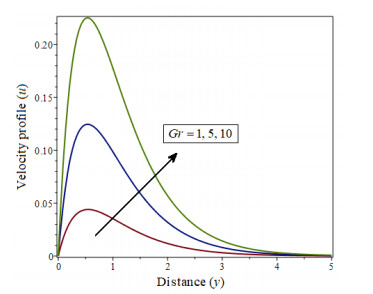









 DownLoad:
DownLoad:
